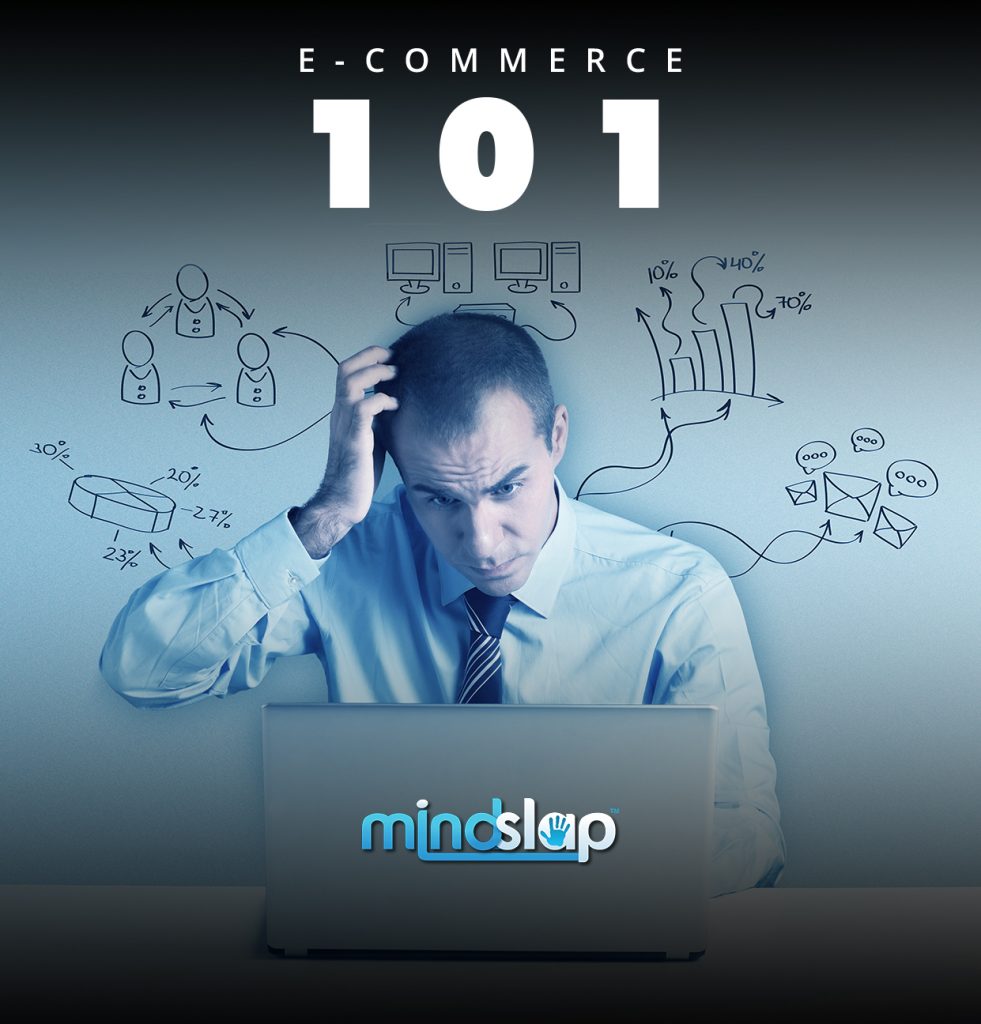While the concept of purchasing something online is a fairly commonplace experience, we understand PROVIDING the service may be some unfamiliar territory for business owners.
The Big Three
There are three primary components associated with eCommerce systems:
1. The Shopping Cart
This constitutes the customer’s interactive experience. This would include the various categories and/or products that are presented to them. This can be formatted in just about any way possible – from a simple, single page that says “Buy Now” – to a complex array of categories and product offerings (think Amazon.com).
2. The Merchant
Your merchant is the bank or institution that collects the funds from the customer’s credit/debit card. (Examples of Merchants would be Chase Bank, Bank of America, Wells Fargo…the list goes on!). Any business wanting to collect a payment via credit card or debit card will pretty much need a merchant to do so (regardless of it is being done in a brick and mortar store or online). However, some merchants may or may not offer online merchant services.
This may vary based on merchant and/or type of service you have with the merchant. (i.e. Card-in-hand accounts vs. virtual accounts).
3. The Gateway
The Gateway aspect of the ecommerce triangle can be the most “hidden” of them all. Basically, the gateway acts as the communicator (translator) between “The Shopping Cart” and “The Merchant”. It is the unseen element that takes the transaction information from the shopping cart (transaction amount, credit card number, expiration date, etc.) and first communicates with the customer’s financial institution to verify the card, available funds, etc. In the instance the information is declined (i.e. insufficient funds in the customer’s account), the gateway communicates back to the shopping cart so the appropriate action may be taken. Upon a successful transaction, the gateway communicates with your merchant to initiate the transfer between banks. An example of a merchant is Authroize.net.
Combined Services
There are a few companies that offer “combined services”, meaning they act as the Shopping Cart, Merchant and Gateway all rolled in one (or in some instances the Merchant and Gateway combined). A great example of this type of service is PayPal. In some instances your merchant may also offer a gateway service.
Considerations
There are several factors to consider when choosing your shopping cart, gateway or merchant.
Compatibility
An important factor is compatibility. If you already have a merchant that you use, selecting a shopping cart solution and gateway provider that are compatible are important to ensure all aspects of the system can communicate with one another. Some shopping cart systems are not compatible with gateways – which may limit the selection of available shopping carts. Mindslap will help you through the selection process and if something is custom built, chances are we will be able to connect it to a gateway that is supported by your merchant.
Compliance
Merchants and gateways all operate with their own set of requirements that you must follow in order for them to accept your website, allowing you to open up for business. (Example: Most require you have a return policy posted on your website, but one merchant may require that the link to view it be within a specified proximity to the “buy” button).
Merchant/gateway compliance departments will often need to view your working website before they will fully authorize you to open for business. Be advised that the approval process can take a little time (up to three weeks), so you will want to get this process started as quickly as possible, especially if you do not yet have a merchant selected.
Securing Transactions
Regardless of which shopping cart/merchant/gateway combination you choose, it is important that all purchases offered by your company are secure. If the customer information is being entered in on a web page you are hosting, you will need to make sure you domain is secured (this is denoted by an “https” in the URL). This encodes the communication between your website and the gateway. Mindslap offers the installation and setup of an SSL certificate as a separate service if you do not already have this in place.
Monthly Transaction Amounts
Merchants evaluate your businesses risk factor based on the average price of your customer’s purchases and how transactions you anticipate per month. The higher this number is, the more of a risk you become. However, stating too low of an amount may make you less of a risk to the merchant (and gain their approval), but then you may be “penalized” if your company exceeds the monthly amount you told the merchant you were anticipating doing. (This can result in the merchant putting a hold on a portion of your revenue for 3-6 months).
Conclusion
There are a lot of options when it comes to your ecommerce offering and we hope this document has clarified some of the different components associated with it. Mindslap will work with you to determine the best solution based on your existing merchant (or from the very beginning if necessary).





